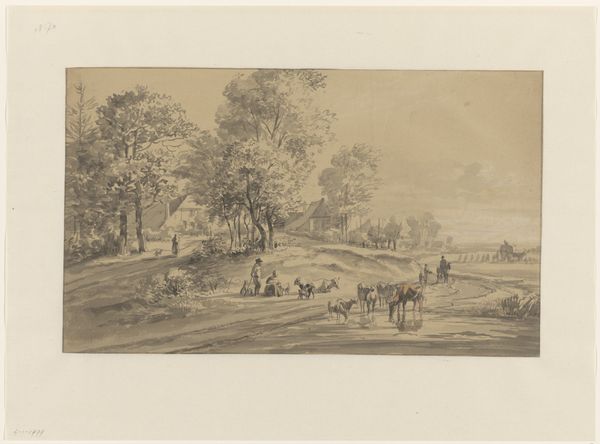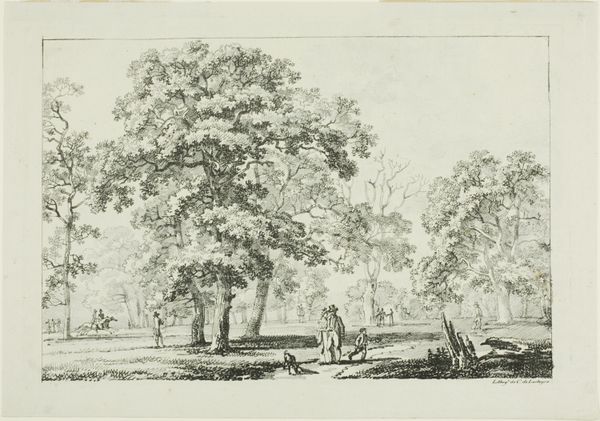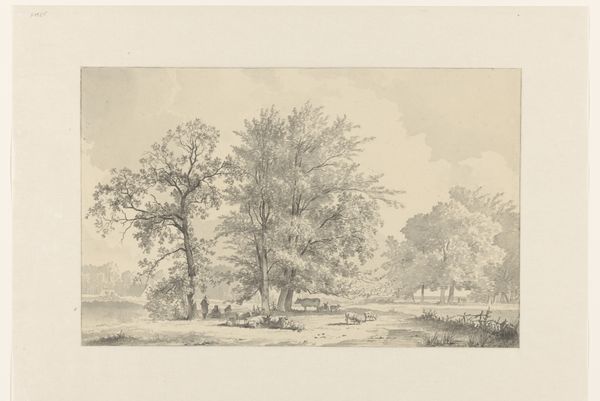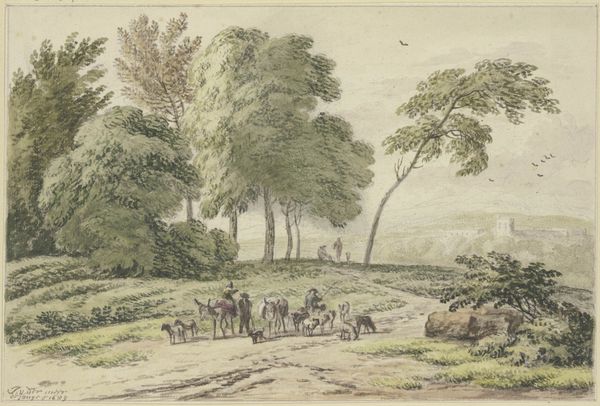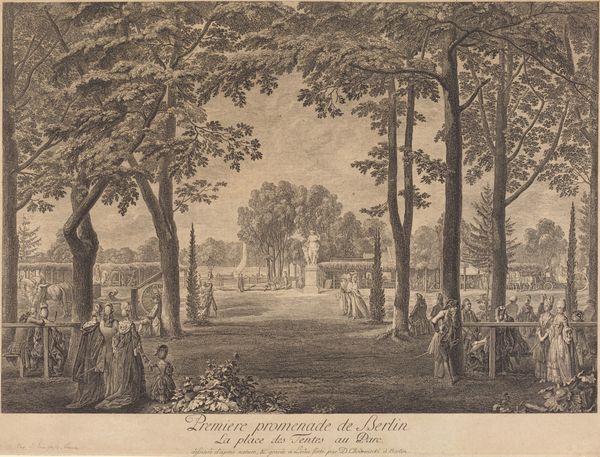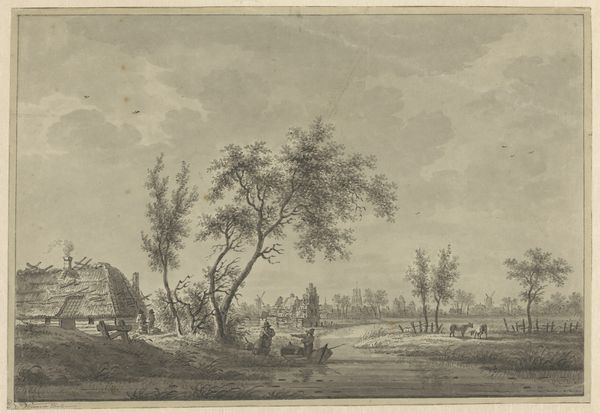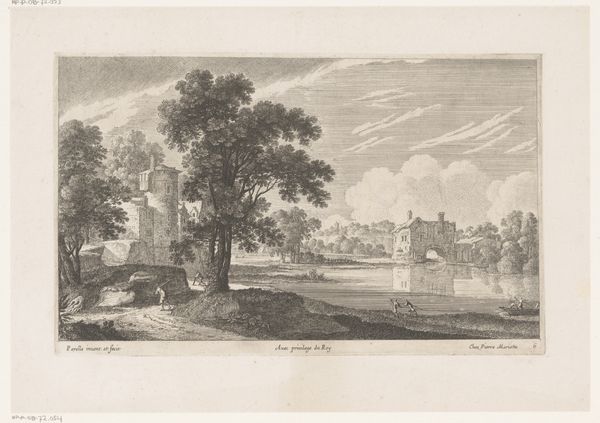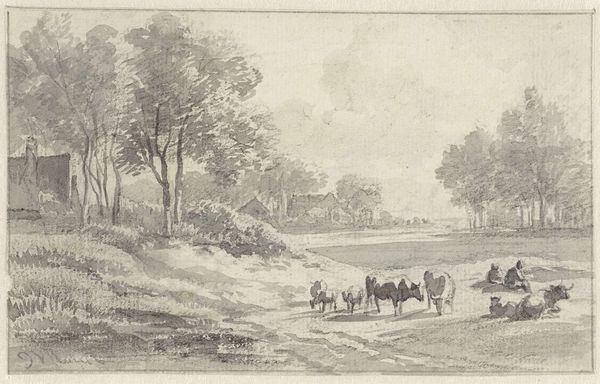
Haus unter Bäumen, am Tor eine Frau, außerhalb des umzäumten Grundstücks ein sich entfernender Wagen
0:00
0:00
drawing, paper, watercolor, ink, indian-ink, pencil, chalk
#
drawing
#
pencil sketch
#
landscape
#
paper
#
watercolor
#
ink
#
coloured pencil
#
indian-ink
#
romanticism
#
pencil
#
chalk
#
genre-painting
#
watercolor
Copyright: Public Domain
Editor: This is “Haus unter Bäumen, am Tor eine Frau, außerhalb des umzäunten Grundstücks ein sich entfernender Wagen” by Hendrik Spilman. It looks like ink, watercolor, pencil, chalk and paper were used, and what strikes me is how the artist seems to contrast a static, enclosed domesticity with a receding image of mobility and commerce in the departing wagon. What can you tell us about this work? Curator: I notice the meticulous detail in rendering the natural and built environment using such a variety of drawing materials. It begs the question of the accessibility and value of these materials. Where did Spilman source his pigments? Was chalk more available than Indian ink at the time? Editor: That's interesting. I hadn't thought about the relative accessibility of artistic materials. How does that affect our interpretation? Curator: Well, it reveals a tension. Here is a "genre-painting" that purports to show us something about daily life, but the very means of production—the types of ink, chalk, and pencils Spilman chose, and the labor necessary to create this— speak to a specific level of economic status and trade relations. The depicted windmill in the background indicates a method of industry powered by wind, an available energy source, whereas pigment must be purchased. Where, exactly, does our artist focus his attention, and to what end? Editor: So the choices behind creating the piece influence what the artwork conveys, beyond just the depicted scene. The consumption involved to create. Curator: Precisely. Notice how the title, “House under Trees… a Car Departing,” foregrounds shelter in a very specific time. The wagon moves and goes beyond enclosure; meanwhile, labor goes into constructing not the building itself, but a portrait of it with the various materials, the paper, ink and pigment it sits on and holds. The piece’s social meaning thus emerges not just from the subject, but also its material constitution. Editor: Thanks! I am realizing it makes me rethink how art is as much about *making* as it is about seeing. Curator: Yes! Looking at the means and context of production opens so many new doors.
Comments
No comments
Be the first to comment and join the conversation on the ultimate creative platform.

